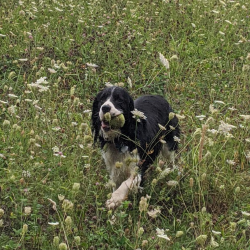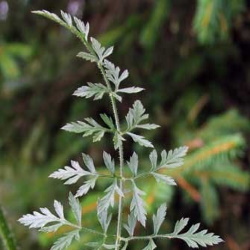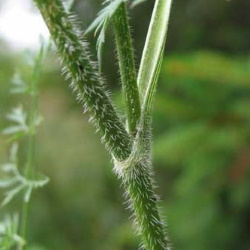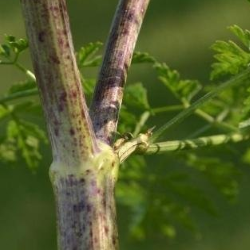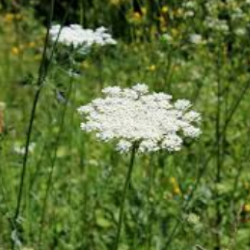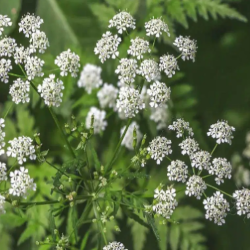Queen Anne’s Lace is a very common during the summertime in New England. The fields are full of them where we live. Pictured above are Queen Anne’s Lace and our youngest Springer, Chauncey with his prized tennis balls.is our youngest, Chauncey crushing some. As a child I loved picking bouquets of these flowers and making fairy wreaths for my head sprinkling the rest in vases throughout the house.
Lately I heard some talk about queen Anne’s lace being poisonous for humans and dogs. This is not true. After fact checking I learned they are perfectly edible.
“Queen Anne’s Lace” also goes by the less romantic name- Daucus Carota, which also goes by the name “wild carrot”. After the flower appears, the carrot is too mature to eat because of its texture, not because of any danger. Here are the leaves of the plant:
Without the flower, it is much easier to recognize as “wild carrot.” Please be warned, the leaves Poison Hemlock look similar to the leaves of this “wild carrot”-Queen Anne’s Lace. Poison Hemlock is poisonous – even to the touch. Consuming these leaves can be fatal. So, before you go harvesting, here is how you can tell the plants apart. First, Queen Anne’s Lace (photo in the center) has a green, hairy stalk. Poison Hemlock has a smooth stalk with purple or black spots and/or streaks on it (photo on right).
Also, Queen Anne’s Lace generally has one dark flower in the middle of the bloom. Unfortunately, that is not always a good tell since the dark flower is not always present and is not always visible. However, Queen Anne’s Lace does always have a primary flower at the top of the stalk (photo left) Poison Hemlock blooms in clusters (photo on right)
Interestingly, if the stalk is broken, Queen Anne’s Lace smells like a carrot; and the Poison Hemlock smells like mildew. So, BEWARE! xo


